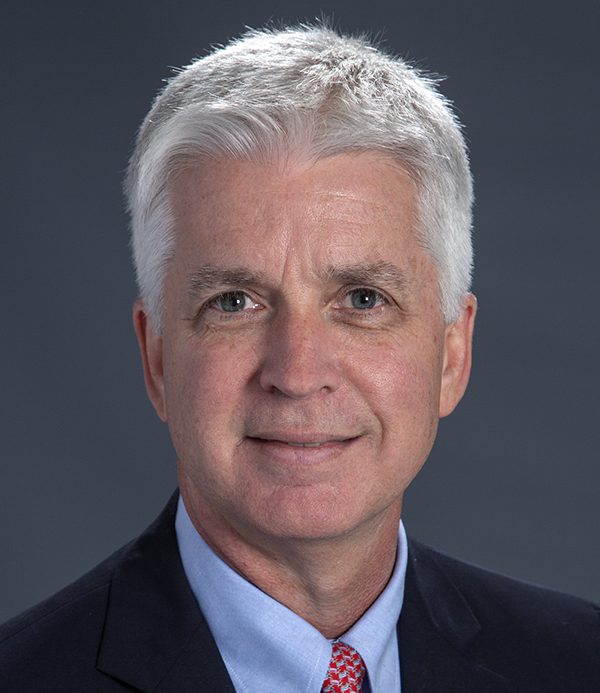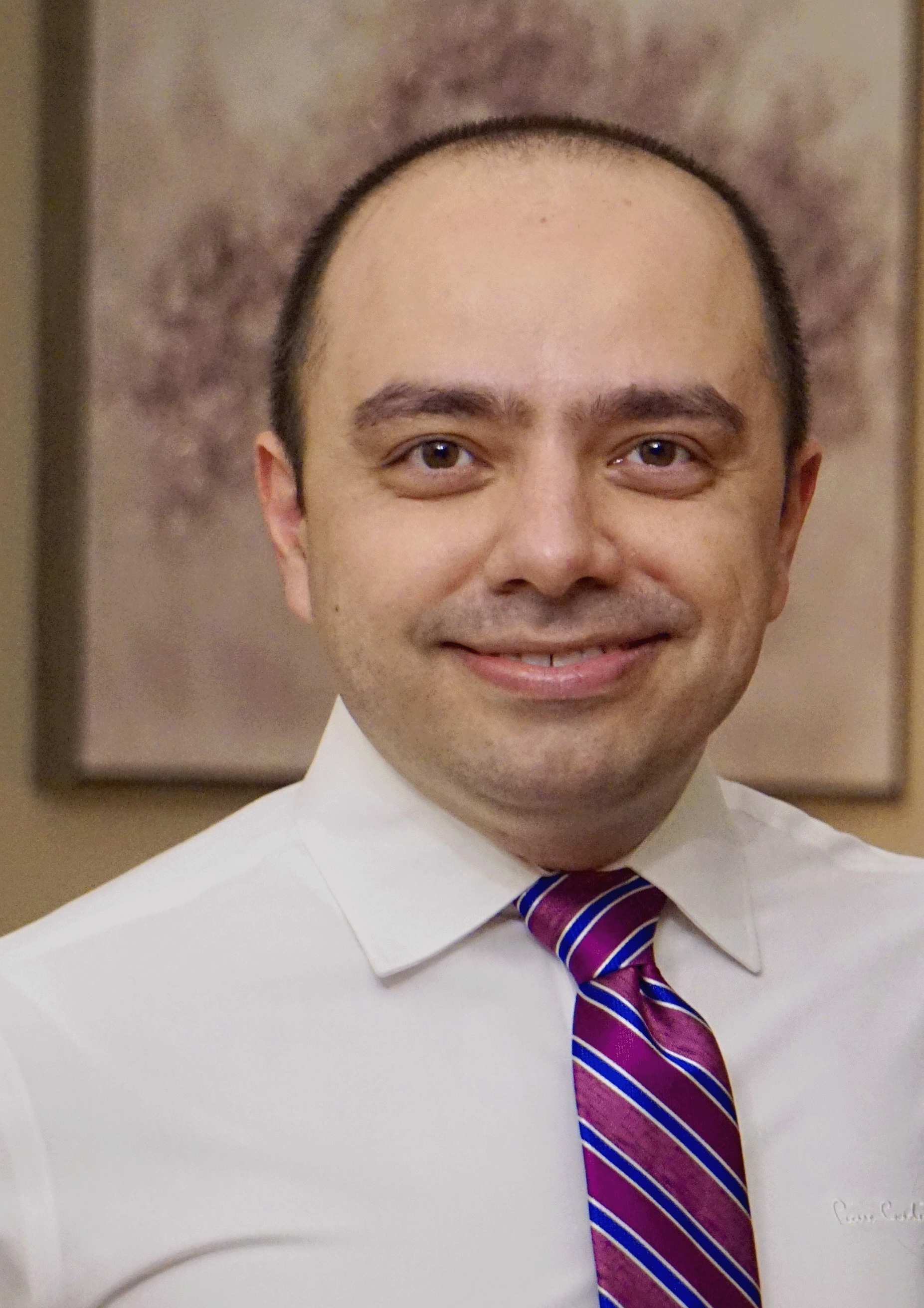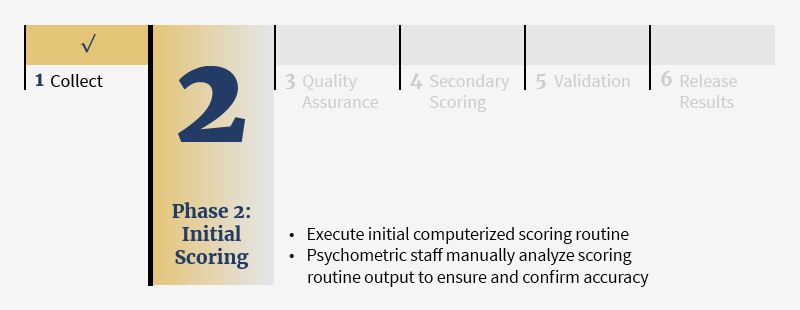June 2022 | Volume 15, Issue 3

Kamyar Ghabili, MD; Jared Pasetsky, MD; Simone Raiter, MD; Emily Thompson, PhD; and Emily Van Antwerp, MD, are new residents in radiology, medical physics, or radiation oncology. Read their stories below in this month’s New Perspectives.

ABR Evaluates Processes, Policies, and Procedures to Improve Certification Experience

By J. Anthony Seibert, PhD, ABR Governor
2022;15(3):1
Welcome to the mid-year 2022 publication of The Beam. The American Board of Radiology is continually evaluating processes, policies, and procedures to improve the flexibility, quality, efficiency, and value of ABR certification for its candidates and diplomates. Many of the articles in this edition describe modifications, updates, or initiatives to achieve these goals.
From the President: Vince Mathews announces the decision of the Board of Governors to sunset the Authorized User-Eligibility (AU-E) status on the ABR certificate by the end of 2023. He explains the rationale for doing so and indicates the re-direction of currently allocated resources to exam improvement. (For more on this topic, see Focus on RO.)
From the Executive Director: Brent Wagner discusses the American Board of Medical Specialties’ modifications to the Continuing Certification Standards to be enacted in January 2024 by its Member Boards, and how the ABR is fortunately situated by the proactive efforts it took in 2019 with the initiation of the Online Longitudinal Assessment (OLA) program, improvement of the continuing medical education requirements by offering greater flexibility to diplomates, and expansion of the Part 4 “Improvement in Medical Practice” by adding peer learning to the suite of acceptable activities meeting these requirements.
Click HERE to read more.

ABR Will Cease Issuing Authorized User-Eligibility Designation After 2023
 By Vincent P. Mathews, MD, ABR President
By Vincent P. Mathews, MD, ABR President
2022;15(3):2
After extensive internal deliberation, the ABR announced in March that we would no longer be issuing authorized user (AU) eligibility (AU-E)1 on our certificates after 2023. The Nuclear Regulatory Commission (NRC) has defined requirements for “training and experience” (T&E) to allow practitioners to be added to a facility license for supervision of safe medical applications of radiation and radioisotopes. For the past 15 years, the ABR has accepted documentation from the programs supporting the requisite T&E in support of “eligibility” to become authorized users. However, there is no required link between board certification and AU status: one may be board certified without being an AU, and one may be an AU without being board certified.
There are three reasons the ABR has decided to cease issuing AU eligibility. First, as mentioned above, there is no specific correlation between “board certified” and “authorized user” status. Second, the resources supporting this activity are more appropriately directed to improving our exams with respect to maintaining validity (for the public) and improving candidate experience. Third, there is a pathway directly to the NRC for verifying T&E in support of adding an individual to an institutional license.2
Click HERE to read more.

Continuing Certification Modifications Improve Learning and Assessment Processes
 By Brent Wagner, MD, MBA, ABR Executive Director
By Brent Wagner, MD, MBA, ABR Executive Director
2022;15(3):3
The American Board of Medical Specialties (ABMS) released a new set of Continuing Certification Standards in November 2021 (New Certification Standards Reflect Foundational Changes | American Board of Medical Specialties). The 24 Member Boards, including the ABR, have until January 2024 to comply with the modified standards. The good news for our diplomates (and for the ABR) is that we have already implemented most of the improvements to our program, so nearly all our Continuing Certification (MOC) participants will see no significant change.
The modifications are based on a process that took nearly three years, beginning with extensive external stakeholder input; the issuance of a report of an independent commission (Continuing Board Certification: Vision for the Future Commission Achieving the Vision | American Board of Medical Specialties); and more than two years of task force work and iterative feedback.
Click HERE to read more.

Board Certification Serves Physicians and Patients
 By Robert M. Barr, MD, ABR President-elect
By Robert M. Barr, MD, ABR President-elect
2022;15(3):4
Most of the 24 American Board of Medical Specialties (ABMS) certifying Member Boards were formed in the first half of the 20th century, at a time of rapid increases in medical knowledge and technology. These advancements contributed to the evolution of varying degrees of specialization, gradually replacing the widely accepted “general practice” model of the preceding century, in which it was not uncommon for individual physicians to provide a diverse spectrum of surgical, obstetric, and ambulatory diagnosis and treatment – all in the same day.
Focused knowledge and skill that were recognized as important elements of safe, effective, and scientifically based care nearly 100 years ago led to heightened expectations by patients, hospitals, and professional colleagues in specific areas of practice. Highly trained individuals sought to distinguish themselves as more capable in these targeted skills, and professional societies emerged to support that effort. These organizations not only offered an avenue for physicians to share their expertise with colleagues, but also provided the public with an indicator of enhanced quality born out of training, experience, and high standards as determined by that subset of the field (i.e., “the specialty”).
Click HERE to read more.

Volunteer Task Force Addresses Image Quality Challenges
 By Stephen F. Simoneaux, MD, ABR Trustee
By Stephen F. Simoneaux, MD, ABR Trustee
2022;15(3):5
When a candidate sits down to take an ABR exam, high image quality is certainly an expectation. Over the years, as the tests have transitioned from glossy printed booklets, to films on view boxes, to computers, maintaining excellence in imaging has been a challenge. Plus, as more and more item writers have joined the ranks of the volunteers and have supplied their own cases to the image pool, the need to standardize image quality has been highlighted. To assist with this task, in 2019 the ABR developed an Imaging Task Force comprising members from all the disciplines – diagnostic radiology, interventional radiology, medical physics, and radiation oncology.
The first item to be addressed was an understanding of the current processes. Task force members met with the imaging staff at the ABR offices in Tucson to go through the entire procedure of image evaluation and preparation. This included testing various methods volunteers might use to procure images; for example, using screen capture tools versus saving images from PACS, and saving as JPEG files versus PNGs. Questions the staff had were also addressed, partly with a field trip to the University of Arizona to see the PACS in action and observe how a volunteer might use their system to obtain images. Most of the staff had never been in a radiology reading room much less seen a PACS, so this excursion led to a clearer idea of what radiologists face as they do their daily work and consider images for use in ABR exams.
Click HERE to read more.

Technology Enables New Exam Creation and Delivery
 By N. Reed Dunnick, MD, ABR Associate Executive Director for Diagnostic Radiology
By N. Reed Dunnick, MD, ABR Associate Executive Director for Diagnostic Radiology
2022;15(3):6
Technology has advanced tremendously since 1943 when IBM President Thomas Watson said “I think there is a world market for maybe five computers.” In 1977, Ken Olsen, founder of Digital Equipment Corporation, opined that, “There is no reason anyone would want a computer in their home.” Watson and Olsen, as well as many others, failed to predict the impact information technology would have on our lives.
In 1979, Allan Cormack and Sir Godfrey Hounsfield shared the Nobel Prize in physiology/medicine. Cormack demonstrated the theoretical basis for CT scanning while Hounsfield, working on computers for EMI, Ltd., realized that by taking data from X-rays of an object from all angles, an image of the object could be created. The first CT scanner used in medical practice was for a head CT, which was obtained at the Morley Hospital in London in 1971. It was computer technology that made it possible.
Click HERE to read more.
Tiptoeing Back to Normal?
 By James B. Spies, MD, MPH, ABR Associate Executive Director for Interventional Radiology
By James B. Spies, MD, MPH, ABR Associate Executive Director for Interventional Radiology
2022;15(3):7
In the past two years, we all have struggled with the pandemic and the breadth of its impact on all aspects of our lives. Nearly everything we do in daily life has been upended, and radical changes have been required in how we manage our responsibilities.
At the ABR, we have completely transformed our computer-based and oral exams to the remote format. While we initially were concerned with several aspects of that necessary change, we have come to see the benefits for our candidates. Because an exam can be done remotely, there is a substantial savings in both time and money for the candidates. A range of controls has ensured a high level of security. Although technical challenges affect a small proportion of candidates during exams, for the vast majority, the change has been positive. We believe we can provide a secure, accessible platform and do not have plans to switch back to in-person exams.
Click HERE to read more.

MP Oral Examiner Training and Engagement
By Matthew B. Podgorsak, PhD; Kalpana M. Kanal, PhD; and Robert A. Pooley, PhD, ABR Trustees; and Geoffrey S. Ibbott, PhD, ABR Associate Executive Director for Medical Physics
2022;15(3):8
As is the case for all ABR volunteers, medical physicists who are selected to participate as oral examiners must hold an ABR certificate that meets the requirements for the Continuing Certification (MOC) program. Other prerequisites for a potential examiner typically include prior or current engagement with an ABR committee and at least five years elapsed since board certification, although exceptions to these two requirements are occasionally made in response to an extraordinary need for examiners.
Several months before an oral exam, potential examiners are selected by an ABR trustee or the ABR associate executive director (AED), and an invitation is sent by the Exam Delivery team. Included with the invitation are the dates of the exam and, starting with the next round of invitations, required training and other examiner virtual meetings will also be explicitly listed. Our goal is to inform a potential examiner of the scope of expected engagement associated with participation as an examiner, so they will understand the time commitment if they accept their invitation.
Click HERE to read more.

Authorized User-Eligibility: Changes Afoot in the Designation
 By Paul E. Wallner, DO, ABR Associate Executive Director for Radiation Oncology; and David Laszakovits, MBA, Director of Communications
By Paul E. Wallner, DO, ABR Associate Executive Director for Radiation Oncology; and David Laszakovits, MBA, Director of Communications
2022;15(3):9
In 2004, following an agreement reached with the U.S. Nuclear Regulatory Commission (NRC), the ABR began to add the designation “Authorized User-Eligible” (AU-E) to Initial Certification certificates of certain diagnostic radiology (DR) and radiation oncology (RO) diplomates. The designation was granted to IC awardees whose program directors (PDs) had attested to the ABR to completion of all Accreditation Council for Graduate Medical Education (ACGME) program requirements that included the training and experience (T&E) elements mandated for use of agents requiring written directive, defined in 10CFR35.390, 490, and 690.1
The intent of this added certificate designation was to provide diplomates verification of required documentation for appropriate providers to become AUs of specific radioactive agents. The designation changed nothing in the requirements for T&E and was just one of the pathways available to physicians interested in obtaining AU status from the NRC. The designation did not confer Authorized User status, which has always required a request for, and inclusion of, the provider on individual facility licenses. In addition, the designation had no bearing in some of the 39 Agreement States, which operate their own radiation regulation programs under “Agreement” with the NRC.2 Many of these Agreement States have always required AU applicants to provide the primary documentation noted in the individual NRC regulations.
Click HERE to read more.

New Residents Ready to Take Next Steps in Their Careers
By Rodney Campbell, ABR Communications Manager
2022;15(3):10
This past March on Match Day, medical school graduates across the country discovered where they will spend their residencies. The day is the culmination of years spent dreaming about becoming a physician and working hard to achieve the goal.
Radiologists, medical physicists, and radiation oncologists were among the thousands of medical professionals who received good news. Here are stories we collected from a few of them as they prepare to start their residencies.

Kamyar Ghabili, MD
Matched to Penn State Health Milton S. Hershey Medical Center for 2023 (Diagnostic Radiology)
I grew up in Tabriz, Iran, and earned my MD at Tabriz University School of Medicine. Since the early years of medical school, I have cherished a dream of being trained in state-of-the-art technology in the U.S. My journey in the U.S. started as a research fellow at Johns Hopkins (2015-2017) and later at Yale School of Medicine (2017-2019), doing clinical research on prostate MRI, which sparked my interest in radiology.
In 2019, I chose to do a preliminary general surgery residency at Yale-New Haven Hospital in Connecticut, which shed light on my decision toward radiology. During preliminary training (2019-2021), I learned unique aspects of radiology that bolstered my passion in the field. I realized how versatile radiology is, from screening and diagnosis to minimally invasive procedures such as interventional radiology. Moreover, from my interactions in the emergency department reading room and tumor boards, I learned that radiologists, as consultants to other physicians, are at the core of patient health care.
Click HERE to read more.
OLA Email Preferences Offer Options
2022;15(3):11
The default setting for Online Longitudinal Assessment (OLA) sends an email to participants every Monday when new OLA questions are issued. But that frequency can be changed to other options that might better suit diplomates’ needs, such as “Question(s) are expiring Sunday” or “Never.”
After logging in to OLA, click on the “OLA Preferences” tab. From there, click on the dropdown menu, select one of the preset options, and then click “Save.” The change will take effect immediately.
ABR Seeks Input on Diagnostic Radiology Initial Certification Process
2022;15(3):12
The ABR is seeking stakeholder input and insights into the Diagnostic Radiology (DR) Initial Certification (IC) process, including both the Qualifying (Core) and Certifying exams, with the goal of continuous improvement.
At this point, we are focused on gathering feedback and perspectives. If the ABR elects to make substantial changes, we would provide at least five years’ notice before those changes would be implemented.
Please see our website for more information.
ABR Introduces Scoring Progress Bar for Computer-Based Exams
2022;15(3):13
After the administration of a computer-based exam, candidates will now be able to follow the progress of the exam scoring process on the ABR website.
All ABR computer-based exam results go through the following six phases: 1) Collect; 2) Initial Scoring; 3) Quality Assurance; 4) Secondary Scoring; 5) Validation; 6) Results Release. When this process, which takes approximately one month, is finished, exam results are posted in each candidate’s myABR account and candidates receive an email notification.
Before receiving their results, candidates can now check on the ABR website in the Exam Scoring Progress section for each exam to see the current phase of the scoring process.
For more information on the exam scoring process, please see this video from ABR Executive Director Brent Wagner.
ABR Associate Executive Director Receives 2022 SIR Leaders in Innovation Award
2022;15(3):14
 The Society of Interventional Radiology (SIR) has honored ABR Associate Executive Director James B. Spies, MD, MPH, FSIR, with the 2022 Leaders in Innovation Award. This award recognizes and promotes innovation within interventional radiology, acknowledging individuals who have conceptualized and implemented an idea that has had an advantageous impact on the practice of interventional radiology.
The Society of Interventional Radiology (SIR) has honored ABR Associate Executive Director James B. Spies, MD, MPH, FSIR, with the 2022 Leaders in Innovation Award. This award recognizes and promotes innovation within interventional radiology, acknowledging individuals who have conceptualized and implemented an idea that has had an advantageous impact on the practice of interventional radiology.
Dr. Spies is the chairman, chief of service, and a professor of radiology at Georgetown University. He is a fellow of SIR, was the SIR Foundation chair from 2006 to 2008, and was SIR president from 2014 to 2015. He also received the SIR Gold Medal in 2019.
Click HERE to read more.
Trustee Elected to ASNR Nominating Committee
2022;15(3):15
 Congratulations to ABR Trustee Christopher P. Wood, MD, for being elected to the American Society of Neuroradiology (ASNR) Nominating Committee for 2022-2023.
Congratulations to ABR Trustee Christopher P. Wood, MD, for being elected to the American Society of Neuroradiology (ASNR) Nominating Committee for 2022-2023.
Dr. Wood is a professor in the department of radiology at the Mayo Clinic in Rochester, Minnesota, where he has been on staff since 1992. He completed his neuroradiology fellowship at the Mayo Clinic College of Medicine in 1992 after finishing his radiology residency training at Johns Hopkins Hospital. Dr. Wood has been board certified in diagnostic radiology since 1991 and has held a subspecialty certification in neuroradiology since 1995.

May 24 Blog
Radiology a Critical Component of Medical School Experience
May 23 Blog
ABR Offers Self-Assessment Tool to 2022 Residency Graduates as Pilot Program
May 17 Blog
RISE Content Remains Important Part of Qualifying, Certifying Exams
May 10 Blog
Med Student Preparing for Match 2023 and Beyond
May 3 Blog
ABR Funding Research Opportunities Through ABMS Visiting Scholars Program
April 28 Blog
ABR Residency Leave Policy an Experience-Changer for Trainees










